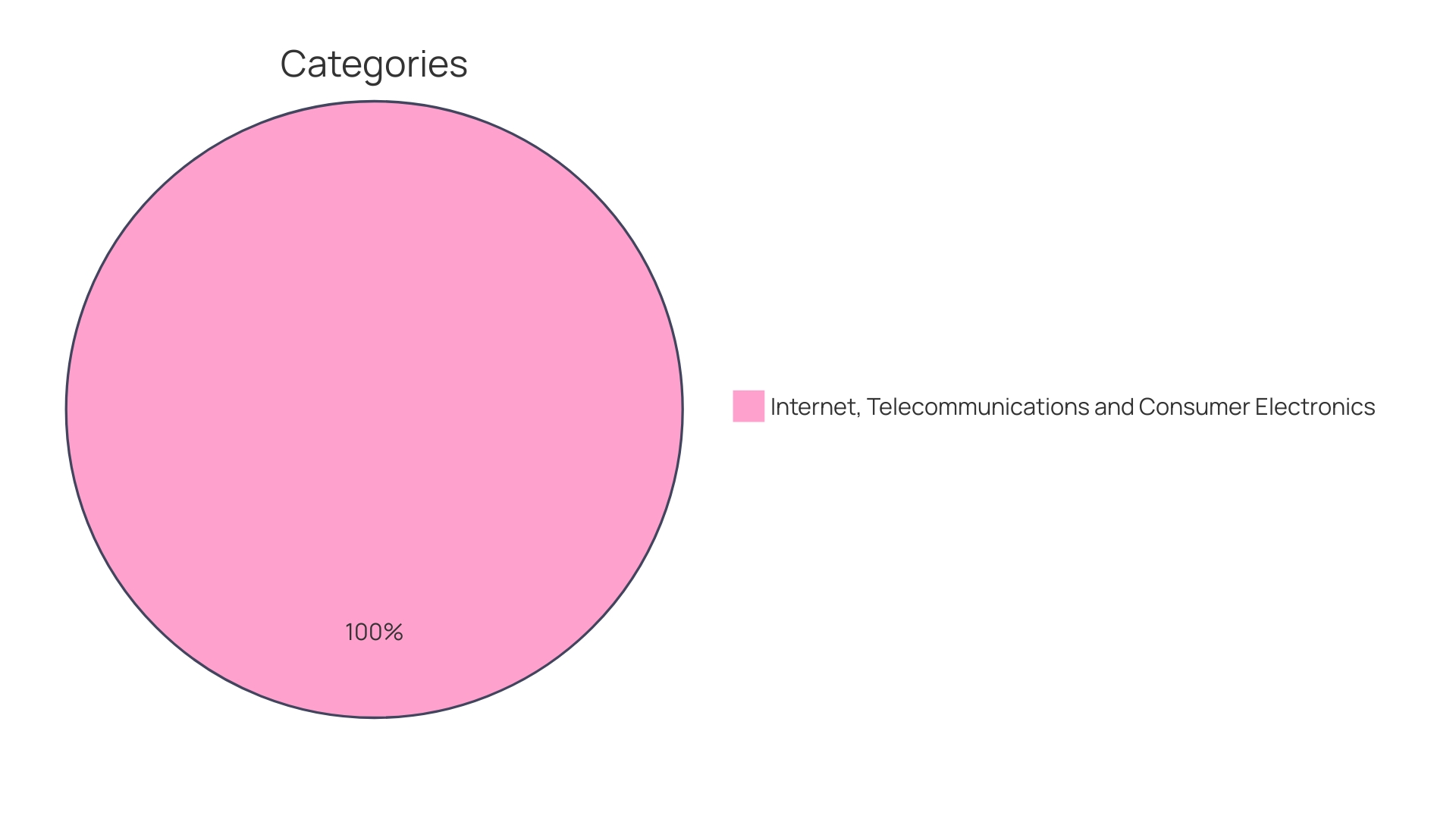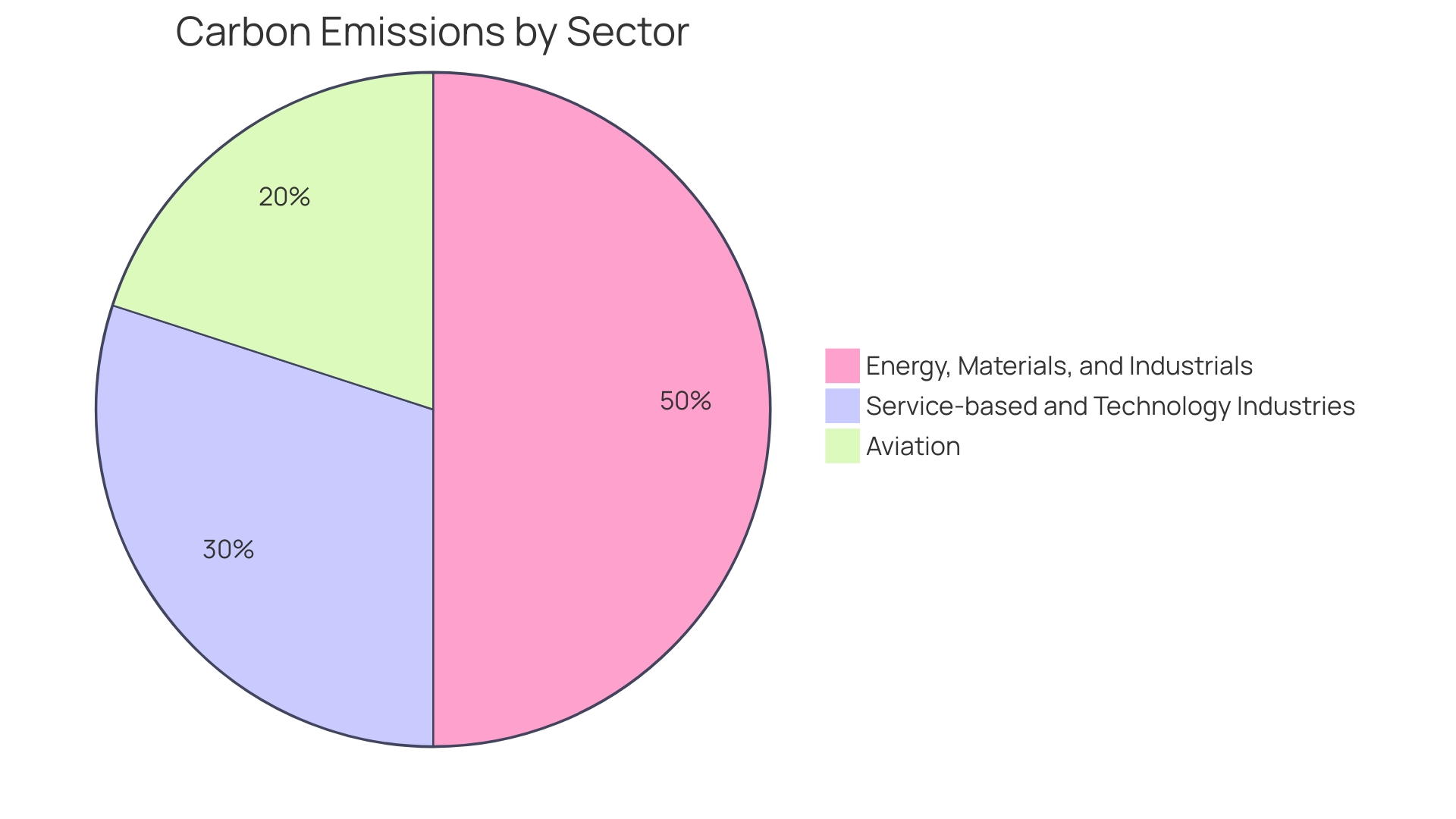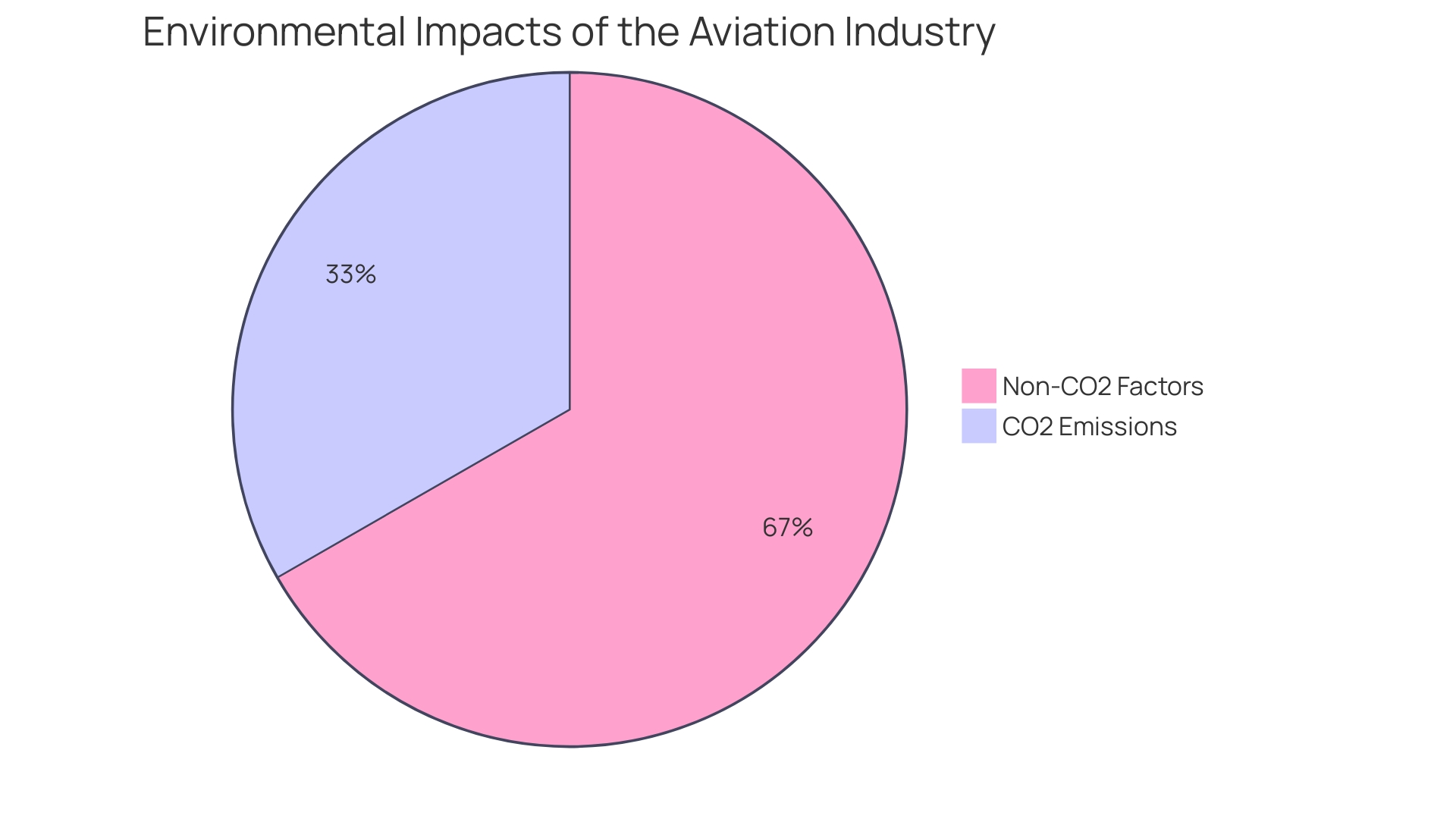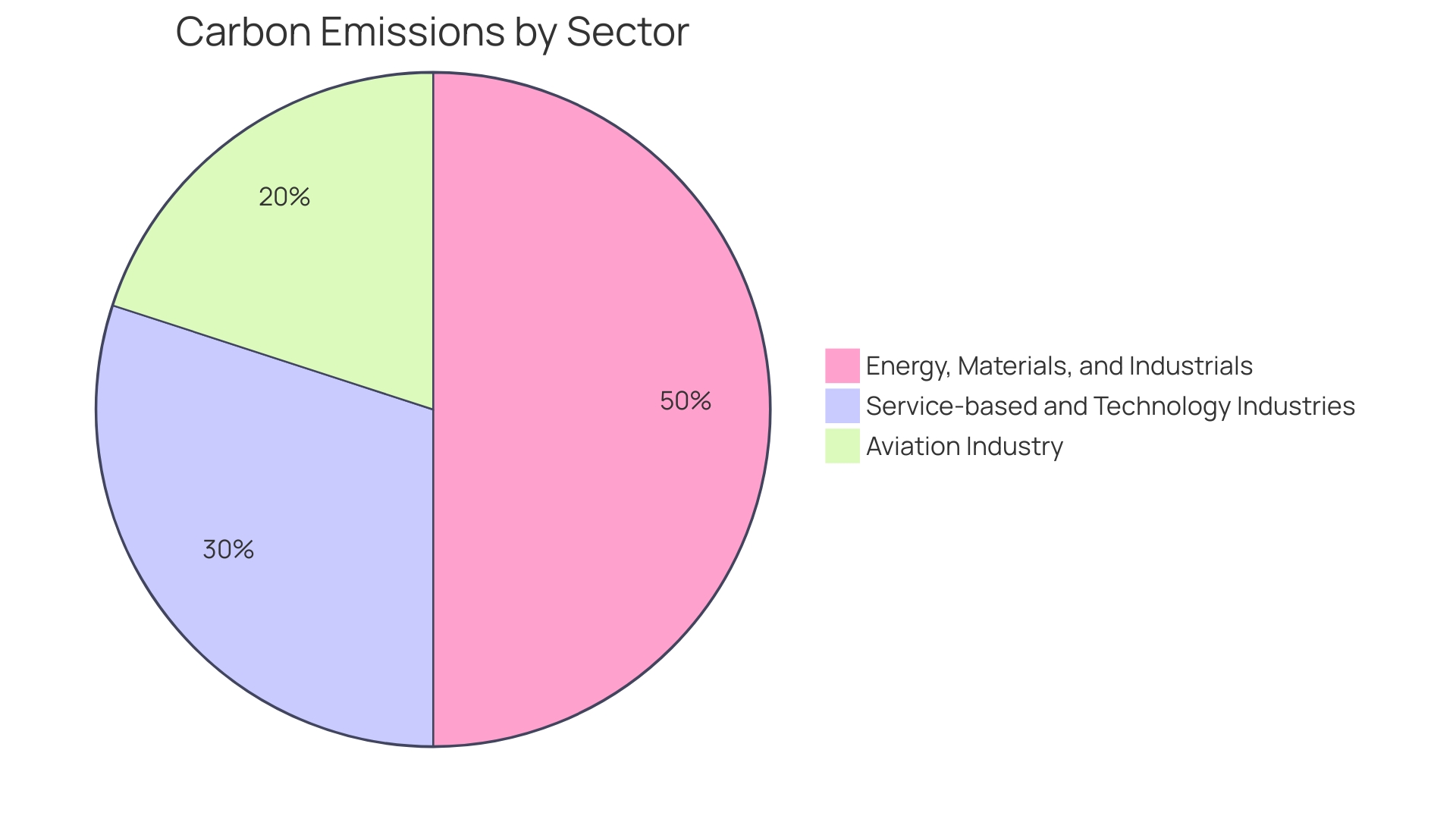Introduction
The aviation industry faces a daunting challenge in reducing its environmental impact, as it accounts for approximately 2.5% of global CO2 emissions. With air travel being one of the most carbon-intensive activities, achieving net-zero carbon emissions by 2050 seems like an uphill battle. The industry's heavy reliance on fossil fuels, coupled with the limited options for decarbonization, further complicates the situation.
However, there is hope in the form of sustainable aviation fuel (SAF), which has the potential to cut carbon intensity by over 80%. Despite its promise, SAF currently constitutes less than 0.1% of global aviation fuel due to supply shortages, fragmented demand, and cost barriers. The industry's struggle to separate growth from emissions contrasts with other sectors, such as electric vehicles in transportation, which have successfully decoupled expansion from greenhouse gas emissions.
As the aviation sector grapples with the urgency for sustainable solutions, it must confront the challenge of decarbonization amidst growing demand and limited options.
Key Challenges in Reducing Aviation's Environmental Impact
With global CO2 emissions reaching record highs, the aviation industry, accounting for approximately 2.5% of these emissions, faces the daunting task of achieving net-zero carbon emissions by 2050. This is a significant endeavor, given that air travel is one of the most carbon-intensive activities, especially in affluent regions where personal carbon footprints are heavily impacted by flying. A round trip from New York City to London, for example, emits around 1000 kilograms of CO2—more than the annual emissions of many individuals worldwide.
The persistent rise in greenhouse gas emissions, coupled with the increasing understanding of non-CO2 impacts such as contrail cirrus formations, underscores the urgency for sustainable solutions. Sustainable Aviation Fuel (SAF) has emerged as a promising option, with potential to cut carbon intensity by over 80%. However, it currently constitutes less than 0.1% of global aviation fuel, hindered by supply shortages, fragmented demand, and cost barriers. The challenge is further compounded by the industry's reliance on fossil fuels, as even the most advanced battery- and hydrogen-powered aircraft remain dependent on liquid fuels for energy density reasons.
Despite advances in technology and efficiency, such as fleet renewals boasting a 25% reduction in emissions and smarter flight routing, these measures merely scratch the surface of the problem. The aviation sector's struggle to separate growth from emissions starkly contrasts with other transport sectors, where electric vehicles have led to a decoupling of expansion from greenhouse gas emissions. Moreover, the significant energy required to lift and sustain heavy airliners in flight presents a technological hurdle that today's battery technology cannot yet surmount.
As the international community grapples with the reality of climate change, evidenced by extreme weather events and the awareness of climate tipping points, the gap between knowledge and action persists. The outcomes of events like COP 27 highlight the need for a novel approach to manage the transformation towards net zero emissions, balancing GHG emissions with removals from the atmosphere. As we look to the future of aviation, the industry must confront the challenging task of decarbonization amidst growing demand and limited options for reducing its substantial environmental impact.

Role of Sustainable Aviation Fuels (SAF)
Sustainable Aviation Fuels (SAF) are not just an alternative to conventional jet fuel; they represent a transformative approach to decarbonizing air travel. Derived from diverse renewable resources, including biomass, waste oils, and algae, SAF have the potential to significantly reduce the aviation sector's carbon footprint. With the capability to slash carbon emissions by over 80%, SAF are a beacon of hope for an industry under scrutiny for its environmental impact.
Recent milestones, such as Virgin Atlantic's pioneering efforts, underscore the aviation industry's commitment to achieving net zero carbon emissions. Virgin Atlantic's reputation for innovation and customer service, coupled with its strategic partnerships, has positioned it as a leader in the adoption of SAF. These partnerships are vital, as they provide the necessary scale and market demand to overcome current barriers to SAF uptake, namely the limited supply and higher costs compared to traditional jet fuel.
The urgency for action is underscored by statistics revealing that, despite technological advancements, less than 0.1% of flights are currently powered by SAF. As the aviation sector accounts for approximately 2.5% of global carbon emissions—a figure anticipated to increase—there is a pressing need to accelerate SAF production and utilization. This necessitates not only investment but also innovative policy measures, such as a mix of mandates and incentives, to catalyze the industry’s transition.
Case studies like Flexport’s Sustainable Aviation Fuel Program and the International Civil Aviation Organization's net-zero commitments highlight the sector's readiness to adopt SAF. The debate continues on how best to scale up production, with various technological pathways like Hydro-processed Esters and Fatty Acids (HEFA) and alcohol-to-jet fuel emerging as contenders.
In summary, the integration of SAF into the aviation industry is imperative for a sustainable future. Through enhanced collaboration, investment in technological innovation, and supportive policy frameworks, the scale-up of SAF production and adoption can be realized, paving the way for a greener aviation landscape.
Alternative Propulsion Technologies: Hydrogen and Electrification
The frontier of sustainable aviation is being reshaped by the emergence of hydrogen and electric propulsion technologies. These innovations are pivotal in propelling the sector towards zero-emission flights. Noteworthy is the achievement of H2FLY in partnership with Air Liquide, marking a historic moment in September 2023 with the first successful piloted flight of a four-seat aircraft using a fuel cell and liquid hydrogen tank for electric propulsion. The mission encapsulated all commercial flight requirements, including refueling and pressure management, signifying a scalable blueprint for the industry.
The potential of hydrogen as a fuel source is further underscored by the initiative of Hydrogen Airport, an engineering firm guiding airports in their hydrogen transition. With a focus on around 200 airports, the company offers bespoke feasibility studies, evaluating hydrogen needs, supply chain logistics, and cost assessments, in collaboration with Air Liquide and Groupe ADP's expertise.
Moreover, the MoU between Fokker Next Gen and airBaltic sets a collaborative precedent in aviation, highlighting the airline's commitment to a young fleet and decarbonization, while exploring hydrogen aircraft compatibility with their routes.
Airbus Spain's comprehensive project unifies the hydrogen aviation value chain, from primary energy to airport ground operations, aiming to foster a hydrogen aviation ecosystem in Spain. Such multi-stakeholder endeavors are fundamental to the aviation industry's decarbonization trajectory, with Spain positioned to exploit its renewable energy resources for low-carbon hydrogen production.

Policy Options and Incentives for Sustainability
The aviation industry faces a pressing imperative to transition towards sustainability, and policy mechanisms are pivotal in guiding this shift. With aviation contributing approximately 3.5% of anthropogenic climate changes, and CO2 emissions from this sector having doubled since the mid-1980s, the urgency for change is underscored by the finite carbon budget remaining to achieve the goals of the Paris Agreement. The industry's commitment to net-zero emissions by 2050 will require a multi-faceted approach, including the adoption of sustainable aviation fuel (SAF), projected to cut emissions by 60% by 2040 if made more affordable and widely adopted.
Efforts are underway globally to tackle the environmental impact of aviation. The United States' Aviation Climate Action Plan outlines a comprehensive strategy to reach net-zero greenhouse gas emissions by mid-century. This includes over $100 million in funding for airplane technologies to reduce fuel use, emissions, and noise, as well as $130 million for university research on environmental impacts. Technological advancements such as taxi software reduce fuel burn and emissions, contributing to these goals.
Meanwhile, the European Union has demonstrated leadership through collaboration with Member States and the International Civil Aviation Organization (ICAO) to ensure robust reporting and monitoring of progress. The EU's active engagement with ICAO aids in reinforcing international policy coherence.
Despite international discussions at forums like COP 27 emphasizing the need for action, a substantial action gap persists, highlighting the difficulty of aligning international policy with the scale of sustainability challenges faced. Policymakers recognize this gap, yet stronger international climate action remains elusive.
As airlines navigate the complexities of different regulatory regimes, the need for coherent and effective policies becomes apparent. While the industry faces the immense challenge of decarbonizing, with specific energy requirements for aviation fuel outstripping those of alternatives like lithium-ion batteries, the commitment to resilience and long-term viability drives the pursuit of innovation and sustainable practices. Reflecting on this, Gomez of Avianca emphasizes the importance of collective action to maintain the accessibility and progress of air service, especially in regions like Latin America with unique challenges.
The path to sustainable aviation is not without its challenges, but with continued policy development, international collaboration, and innovation, the industry can aspire to meet its environmental responsibilities while ensuring its economic and operational sustainability.

Innovative Solutions and Industry Trailblazers
The aviation industry stands at a pivotal juncture, where innovative solutions are not just welcome, but necessary, to bridge the action gap in sustainability. With the global community's profound understanding of climate change implications, as underscored at COP 27, the urgency to transition towards net-zero emissions has never been clearer. Net-zero encapsulates the ideal equilibrium where greenhouse gas emissions are balanced by their removal from the atmosphere, with the emphasis on minimizing emissions wherever possible.
Aviation, accounting for approximately 2% of global CO2 emissions, is under intense scrutiny to reduce its carbon footprint. Initiatives like Flexport’s Sustainable Aviation Fuel Program exemplify the industry's commitment, despite the challenges posed by aviation's high energy demands and limited decarbonization options. The International Civil Aviation Organization's (ICAO) pledge to achieve net-zero emissions by 2050 further cements the sector's dedication to change.
In this landscape, trailblazers such as British Airways, through their BA Better World programme, are setting a precedent for transformation, targeting the most significant areas of impact: People, Planet, and Responsible Business. By becoming the first airline to voluntarily partake in the UK emissions trading scheme and the first to report its carbon footprint, BA underscores the imperative of accountability and collaboration to foster a sustainable future. Their efforts are echoed by other industry leaders who are renewing fleets, enhancing operational efficiency, and investing in sustainable aviation fuels.
These case studies of airlines, airports, and aircraft manufacturers adopting eco-friendly technologies and business models are more than just success stories—they are beacons that guide the industry towards a greener horizon. As we venture forward, it is through embracing sustainability in all aspects—safety, quality, integrity, and a Just Culture—that the aviation sector will continue to innovate and inspire. Such commitment to a sustainable future is reflected in the words of Dr. Suzanne Kearns, who emphasizes that sustainability extends beyond environmental impacts to encompass the long-term viability of social, environmental, and economic pillars.
Indeed, the journey towards a more sustainable aviation industry is one of continuous improvement. As the industry navigates its path, the stories of progress and momentum, like those observed at events such as New York Climate Week and the Sustainable Skies World Summit, are testimonials to the power of innovation and the collective ambition to reach Net Zero.
Technological Advancements: Efficient Aircraft Design and Operations
The aviation industry is on a mission to reduce its carbon footprint, and technological innovations are at the forefront of this initiative. Aerodynamic improvements, the adoption of lightweight materials, and the evolution of advanced propulsion systems have each played a pivotal role in enhancing fuel efficiency and curbing emissions. An exemplar of such progress is the implementation of bio-resins in aircraft cabins, which not only marks a significant step towards eco-friendly materials but also aligns with the industry's broader sustainability objectives. Efforts to lighten the load are equally noteworthy, with Jet Aviation achieving a remarkable 30-35% weight reduction in air conditioning and ventilation components, thus contributing to energy savings and a smaller carbon footprint.
American Airlines has set a benchmark in eco-innovation, recognized as the 2023 Eco-Airline of the Year, and operating the youngest mainline fleet in the US. Their commitment to sustainability is further underscored by the use of over two million gallons of sustainable aviation fuel and investments in hydrogen-powered propulsion.
The U.S. Federal Aviation Administration (FAA) is also proactively pursuing net-zero greenhouse gas emissions from the aviation sector by 2050. This includes significant investments exceeding $100 million in technologies that minimize fuel use, emissions, and noise, alongside $130 million in university research to develop environmentally friendly solutions. Additionally, the FAA has allocated $327 million to electrify airport gate equipment and vehicles, illustrating a holistic approach to environmental stewardship in aviation.
With a focus on the future, the synergy between American Airlines and Embraer emphasizes the potential of electric, hydrogen, and hybrid propulsion technologies through the Energia concept aircraft. As the industry gravitates towards greener flight, these collaborations are instrumental in shaping a sustainable trajectory for aviation.
Moreover, sustainable aviation fuel (SAF) emerges as a key player in the industry's decarbonization strategy. With the potential to reduce emissions by an estimated 60 percent by 2040, the push for greater affordability and adoption of SAF is paramount. As the third-largest source of US transportation emissions, the aviation sector's transition to SAF is not only a matter of environmental urgency but also a testament to the sector's adaptability and commitment to a greener future.
Informed by comprehensive life cycle assessments, such as the study comparing the Pipistrel Alpha Electro battery-electric aircraft with its fossil fuel-powered counterpart, the industry is gaining a deeper understanding of the environmental impacts from 'cradle to grave.' This knowledge aids in making informed decisions that align with sustainability goals.
As we witness the aviation industry navigating through the challenges of environmental sustainability, the engagement of all stakeholders—from engineers and craftsmen to policymakers and airlines—becomes crucial in embracing new methodologies and materials that pave the way for a more sustainable future.
Global Initiatives and Collaborations for Sustainable Aviation
The aviation industry faces a critical mission to reduce its environmental footprint amidst escalating climate challenges, such as increasing CO2 emissions and the impact of non-CO2 factors like nitrogen oxides and contrails. With commercial aviation responsible for about 3.5% of anthropogenic changes to the Earth's energy balance, and CO2 emissions from aviation having doubled since the mid-1980s, the industry's role in the global climate equation is significant. To address this, international organizations like the International Civil Aviation Organization (ICAO) and the Air Transport Action Group (ATAG) are spearheading efforts to foster sustainable aviation practices worldwide.
Collaboration is at the heart of these initiatives. For instance, the partnership between Breitling and Climate Impulse symbolizes the industry's commitment to innovation and cooperation. Their planned 2028 flight with a hydrogen-powered airplane serves as an emblematic endeavor to demonstrate the viability of sustainable solutions in aviation.
Moreover, the Airports Council International (ACI) actively represents the interests of airports in policy development, advocating for a global air transport system that balances safety, security, and sustainability. With the CLEAN Program focusing on noise reduction and the Airports Climate Challenge aiming for zero CO2 emissions by 2050, the industry is gearing up for transformative changes.
The Sustainable Aviation Innovation Challenge, launched by the UpLink and First Movers Coalition, is another stride towards a greener future. With 16 top innovators selected from 130 submissions, the challenge shines a spotlight on cutting-edge startups that could revolutionize the sector.
This collective momentum is echoed by industry leaders, who underscore the importance of sustainable practices to ensure aviation remains accessible and not a luxury of the past. The sentiment is clear: sustainability is a shared responsibility, and it's imperative that all stakeholders, from citizens to governments and businesses, work in concert to make sustainable aviation a reality.
Case Studies: Successful Implementation of Sustainable Practices
The aviation industry is actively exploring and implementing strategies to reduce its environmental footprint, with British Airways leading the charge through its BA Better World program. This initiative marks a pivotal shift in the airline's operations, focusing on impactful areas such as minimizing carbon emissions, engaging in responsible business practices, and fostering societal benefits. British Airways sets an industry precedent, being the inaugural airline to catalog its carbon footprint and voluntarily participate in the UK emissions trading scheme. Additionally, the airline's parent company, IAG, is the first airline group to commit to net-zero carbon emissions, underscoring their dedication to environmental stewardship.
In parallel with these long-term goals, British Airways is uniting with partners both within and outside the industry to spur innovation and reach net-zero emissions collectively. The airline's century-long history of connecting cultures and fueling economic growth is now intertwined with the urgency of addressing aviation's climate impacts. The year 2023 witnessed significant strides, with British Airways actively contributing to global dialogues at events like New York Climate Week and the Sustainable Skies World Summit, focusing on sustainable solutions.
A groundbreaking milestone for sustainable aviation occurred when Virgin Atlantic operated the first transatlantic commercial flight exclusively powered by sustainable aviation fuel (SAF). Departing from London Heathrow and arriving at New York's John F. Kennedy Airport, the Boeing 787 passenger jet used fuel derived from waste cooking oils and animal fat. This landmark flight, termed Flight 100, not only cut carbon emissions by an impressive 70% but also represented the viability of SAF in reducing the industry's reliance on fossil fuels.
Furthermore, Bangkok Airways is making strides in sustainable practice by embracing the circular economy. Their 'Love Earth – Save Earth' campaign highlights climate and waste management initiatives, including the creative repurposing of materials into limited edition aprons for airport lounge agents.
These case studies underscore the critical progress being made in the aviation sector towards sustainability. As the industry confronts the daunting challenge of curbing its environmental impacts, with commercial aviation accounting for approximately 3.5% of anthropogenic changes to Earth's energy balance, it is imperative to develop and implement innovative solutions. The collective efforts of airlines, airports, and industry stakeholders are essential in transforming aviation into a more sustainable mode of global connectivity, ensuring that the marvel of flight can coexist with environmental responsibility.

Future Outlook and Next Steps for the Industry
As the international community grapples with the severe implications of climate change, it becomes evident that the aviation industry must redefine its approach to achieve net-zero emissions. With the industry's current emission trajectories and the limited carbon budget remaining under the Paris Agreement, the sector is under immense pressure to decarbonize swiftly. Despite aviation contributing to approximately 2.5% of global CO2 emissions, the complexity of reducing its carbon footprint is heightened by varying regulatory regimes and the historical increase in passenger demand outpacing emissions reduction measures.
Sustainable aviation fuels (SAFs) emerge as a pivotal element in the industry's transformation, representing a viable alternative to traditional jet fuel. However, with only 0.1% of flights currently powered by SAFs, the industry faces the challenge of scaling up production and utilization. Ambitious initiatives are underway, such as Airbus's partnership with Neste to pioneer decarbonization efforts and the Airports Climate Challenge, targeting zero CO2 emissions at airports by 2050. The CLEAN Program's focus on advancing aviation technology to reduce noise pollution further illustrates the multifaceted approach required for sustainable progress.
Environmental impacts extend beyond CO2, with non-CO2 factors like nitrogen oxides and contrails contributing significantly to the industry's ecological footprint. Alarmingly, CO2 emissions from aviation have doubled since the mid-1980s, potentially consuming a quarter of the CO2 budget to limit warming to 1.5°C by 2050. Proximity to airports also raises concerns about air quality, with elevated NOx and ozone levels posing health risks.
Quotes from industry insiders reveal a shift in corporate travel patterns, acknowledging the need to adapt to the rising prevalence of online meetings. The stark reality is that even with fleet renewals and operational efficiencies, these efforts merely scratch the surface of the required change. The 'Inconvenient Truth of Aviation's Emissions' chart starkly illustrates the sector's struggle to decouple growth from emissions, a feat other transportation sectors have begun to achieve.
In light of these challenges, the next steps for stakeholders are clear: intensify research, invest in sustainable infrastructure, and foster collaboration. The industry must embrace innovation and policy evolution to navigate the turbulent skies of sustainability, ensuring that the future of aviation aligns with the global pursuit of a healthier planet.

Conclusion
The aviation industry faces a daunting challenge in reducing its environmental impact, accounting for approximately 2.5% of global CO2 emissions. Achieving net-zero carbon emissions by 2050 seems like an uphill battle, given the industry's heavy reliance on fossil fuels and limited options for decarbonization. However, sustainable aviation fuel (SAF) holds promise, with the potential to cut carbon intensity by over 80%.
Despite its potential, SAF currently constitutes less than 0.1% of global aviation fuel due to supply shortages, fragmented demand, and cost barriers.
The struggle to separate growth from emissions in the aviation sector contrasts with other sectors, such as electric vehicles, which have successfully decoupled expansion from greenhouse gas emissions. This highlights the urgency for sustainable solutions as the industry grapples with decarbonization amidst growing demand and limited options.
Sustainable Aviation Fuels (SAF) represent a transformative approach to decarbonizing air travel, derived from renewable resources. However, adoption is hindered by supply shortages, higher costs, and the need for scale and market demand. Investment and innovative policy measures are essential to accelerate SAF production and utilization.
Hydrogen and electric propulsion technologies are reshaping the future of sustainable aviation. Achievements like the piloted flight of a four-seat aircraft using hydrogen fuel cells demonstrate the potential of hydrogen as a fuel source. These technological advancements, coupled with the adoption of sustainable aviation fuel, are crucial for zero-emission flights.
Policy mechanisms play a crucial role in guiding the aviation industry's transition towards sustainability. Efforts are underway globally to ensure robust reporting and monitoring of progress. However, stronger international climate action is needed to navigate the complexities of different regulatory regimes.
The industry's commitment to sustainability is exemplified by trailblazers adopting eco-friendly technologies and business models. These case studies highlight the industry's dedication to reducing its environmental impact and serve as beacons guiding the aviation sector towards a greener future.
Technological advancements in aircraft design and operations enhance fuel efficiency and curb emissions. Life cycle assessments provide valuable insights into the environmental impacts of different aircraft and fuel options, aiding informed decision-making.
Global initiatives and collaborations are driving sustainable aviation practices worldwide. These collective efforts highlight the industry's commitment to innovation and cooperation in achieving sustainability goals.
The future outlook relies on developing and implementing innovative solutions to achieve net-zero emissions. Scaling up sustainable aviation fuel production, addressing non-CO2 factors, intensifying research, investing in sustainable infrastructure, and fostering collaboration are the next steps for stakeholders. By embracing innovation and policy evolution, the aviation industry can navigate the challenges of sustainability and contribute to a healthier planet.




